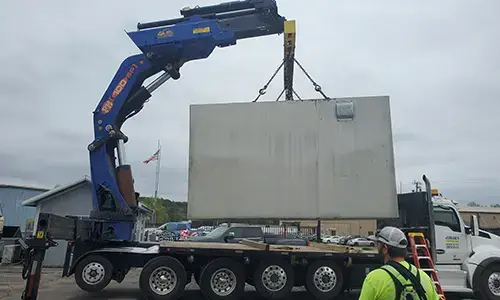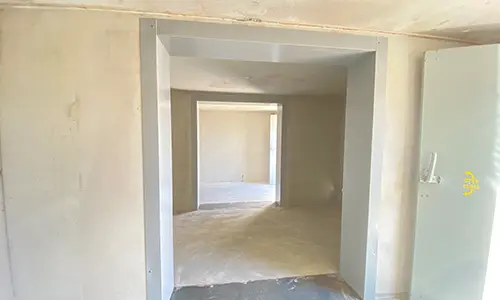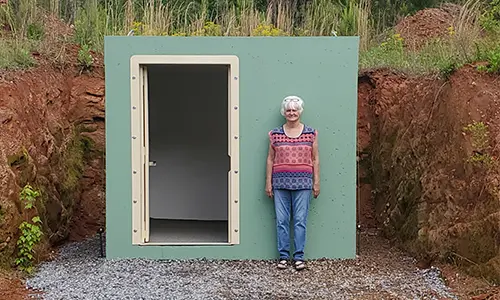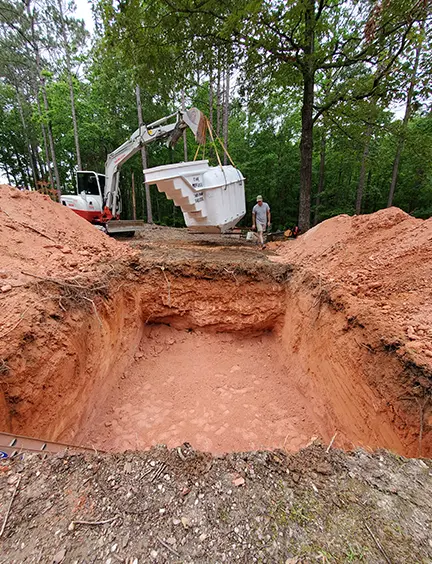Residential Storm Shelters in Alabama: Everything You Need to Know

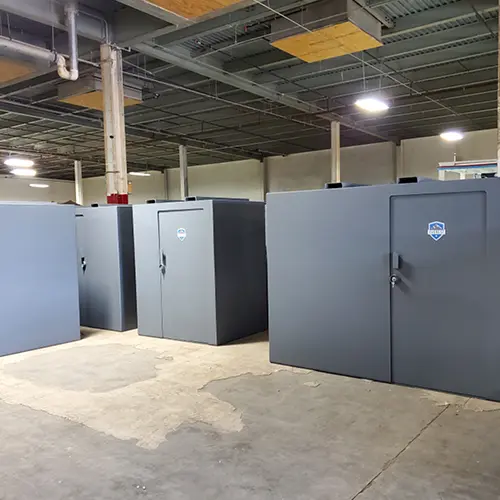
Understanding Residential Storm Shelters and Why They Matter
When tornado sirens sound, every second counts. In Alabama, where severe weather is a seasonal reality, having reliable residential storm shelters isn’t a luxury—it’s a necessity. These structures provide families with peace of mind, protecting them from life-threatening storms that can strike with little warning.
Residential storm shelters are specially engineered to withstand extreme winds, flying debris, and tornado-level forces. Whether designed as underground storm shelters or installed above ground, their purpose remains the same: to provide a secure refuge when the skies turn dangerous.
Key benefits of residential storm shelters include:
- Maximum Safety: Protection against EF-5 tornadoes and debris impact.
- Peace of Mind: Eliminates panic and confusion during weather emergencies.
- Increased Property Value: Adds appeal to potential homebuyers.
Despite common myths, above-ground models are just as safe as underground ones when built to FEMA and ICC 500 standards. Understanding these differences is key to selecting the best storm protection for your Alabama home.
Types of Residential Storm Shelters and How to Choose the Right One
Selecting the ideal residential storm shelter involves assessing your property, budget, and lifestyle needs. Here’s a breakdown of the main options available for Alabama homeowners.
Understanding Underground Residential Storm Shelters
Underground storm shelters are built below the surface, usually in a backyard or garage floor. They offer excellent wind resistance and remain cooler and quieter during storms. These underground bunkers are traditional favorites in Alabama due to their stability and protection from debris.
However, they require careful planning for drainage and accessibility, especially for individuals with mobility limitations or in areas with high groundwater levels.
Understanding Above Ground Residential Storm Shelters
Above ground storm shelters are increasingly popular due to ease of access and flexibility. Built with reinforced steel or concrete storm shelters, they can be installed in garages, basements, or patios. These shelters meet FEMA standards and are ideal when soil conditions make underground construction difficult.
They’re particularly well-suited for elderly residents and families with small children who need quick, accessible protection.
Understanding Steel and Concrete Residential Storm Shelters
Material choice matters. Steel shelters are durable, rust-resistant, and quick to install. Concrete storm shelters, on the other hand, provide thermal insulation, high impact resistance, and long-term durability.
Unpainted Concrete Above-Ground Storm Shelters from Lake Martin Storm Shelters are a popular choice among Alabama homeowners seeking low-maintenance, high-strength protection that blends with property aesthetics.
Understanding Custom-Built Residential Storm Shelters
Every Alabama home has unique needs. Custom-built shelters allow flexibility in storm shelter design, size, and location. Whether you prefer a small garage unit or a multi-room underground safe room, customization ensures the best fit and functionality.
Certified professionals like Lake Martin Storm Shelters guarantee that installations meet FEMA and ICC 500 safety standards, giving you long-term security.
Step-by-Step Guide: How to Install a Residential Storm Shelter in Alabama
A proper installation ensures safety, durability, and compliance with Alabama’s building standards.
Step 1: Assess Your Property and Choose the Location
Evaluate your property’s layout, soil type, and water table. This helps determine whether an underground or above-ground model is ideal.
Pro Tip: Avoid low-lying or flood-prone areas, particularly in high-rainfall regions.
Step 2: Select a FEMA-Approved Shelter Model
Choose only FEMA and ICC 500-certified shelters to ensure protection from 250 mph winds and heavy debris. Visit fema.gov or weather.gov for official safety guidance.
Step 3: Prepare the Foundation and Excavation
For underground installations, excavation depth depends on the storm shelter design and drainage setup. Above-ground models require a reinforced concrete base for secure anchoring. Always check Alabama’s local permitting requirements before digging.
Step 4: Professional Installation and Anchoring
Hire a trusted professional like Lake Martin Storm Shelters for installation. Proper anchoring prevents movement or uplift during high winds, ensuring your shelter stays stable.
Step 5: Test, Seal, and Maintain
Once installed, test doors, seals, and vents. Apply rust-proof coatings for steel or fiberglass storm shelters, and schedule annual inspections before tornado season.
Real-World Applications of Storm Shelters in Alabama Homes
Homeowners across Alabama are integrating residential storm shelters into their daily lives in practical, innovative ways.
Example 1: Suburban Family Home in Montgomery
A family of five installed a compact, above-ground steel unit in their garage. This garage storm shelter comfortably fits six people and has reduced emergency response time by nearly 60%.
Example 2: Rural Property in Tuscaloosa County
A custom underground storm shelter built near a barn now protects a multi-generational family and their livestock during severe storms.
Example 3: Urban Home in Birmingham
Compact indoor safe rooms are increasingly common in smaller city lots, providing maximum safety with minimal space use.
Each example showcases the adaptability and importance of residential storm shelters in Alabama, no matter the setting.
Essential Tips for Maintaining and Using Your Storm Shelter Safely
Proper maintenance keeps your shelter reliable for years to come.
- Keep It Stocked Year-Round: Store water, non-perishable food, first aid kits, flashlights, and batteries.
- Inspect Doors and Seals Regularly: Check for cracks, rust, or leaks every six months.
- Plan Regular Drills: Practice emergency routines with family members.
- Label the Shelter Clearly: Helps emergency responders locate it faster.
- Document and Register Your Shelter: Some Alabama counties offer registration for disaster assistance (alabamawx.com).
A well-maintained residential storm shelter ensures safety and readiness when seconds matter.
Building Safety and Peace of Mind for Alabama Families
Residential storm shelters are more than home additions—they’re investments in your family’s safety and well-being. Whether you prefer concrete storm shelters, fiberglass storm shelters, or tornado shelter kits, choosing a professionally installed, FEMA-approved design guarantees lasting protection.
Now is the perfect time to secure your home. Alabama homeowners can trust Lake Martin Storm Shelters for certified, reliable installations.
Don’t wait for the next storm: invest in your peace of mind today. Learn more about the differences between shelters and safe rooms in Storm Shelter vs Safe Room in Alabama.
For expert guidance and cost comparisons, visit forbes.com, homeadvisor.com, and fema.gov.
FAQs About Residential Storm Shelters in Alabama
1. Are above ground residential storm shelters safe?
Yes. When built to FEMA and ICC 500 standards, above-ground shelters can resist winds exceeding 250 mph and protect against flying debris.
2. How much do residential storm shelters cost in Alabama?
Storm shelter cost typically ranges from $4,000 to $10,000 depending on size, material, and features like ventilation and anchoring.
3. Can I install a storm shelter in an existing home?
Absolutely. Many Alabama homeowners retrofit garages or basements for compact garage storm shelters or modular safe rooms.
4. Do residential storm shelters increase property value?
Yes. Adding a residential storm shelter boosts home value and buyer confidence, especially in storm-prone regions.
5. How long does installation take?
Most installations take one to three days, depending on model type, soil conditions, and accessibility.

